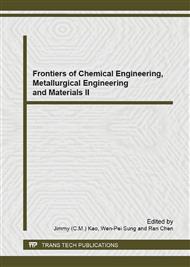p.399
p.404
p.409
p.413
p.419
p.423
p.430
p.434
p.438
The Wave Propagation through the Imperfect Interface between Two Micropolar Solids
Abstract:
in this paper, the reflection and transmission problem of the coupled transverse displacement and transverse rotational waves at the imperfect interface between two different micropolar solids are studied. First, the boundary conditions between two micropolar solids with imperfect interface are used to derive the linear algebraic equation sets. Then, the linear algebraic equation sets are solved numerically and the results are shown graphically. Finally, the influence of the interface parameter reflecting the imperfect degree of interface on the reflection and the transmission coefficients are discussed based on the numerical results.Keyword: reflection and transmission, imperfect interface, micropolar solid, coupled waves.
Info:
Periodical:
Pages:
419-422
Citation:
Online since:
September 2013
Authors:
Keywords:
Price:
Сopyright:
© 2013 Trans Tech Publications Ltd. All Rights Reserved
Share:
Citation:


